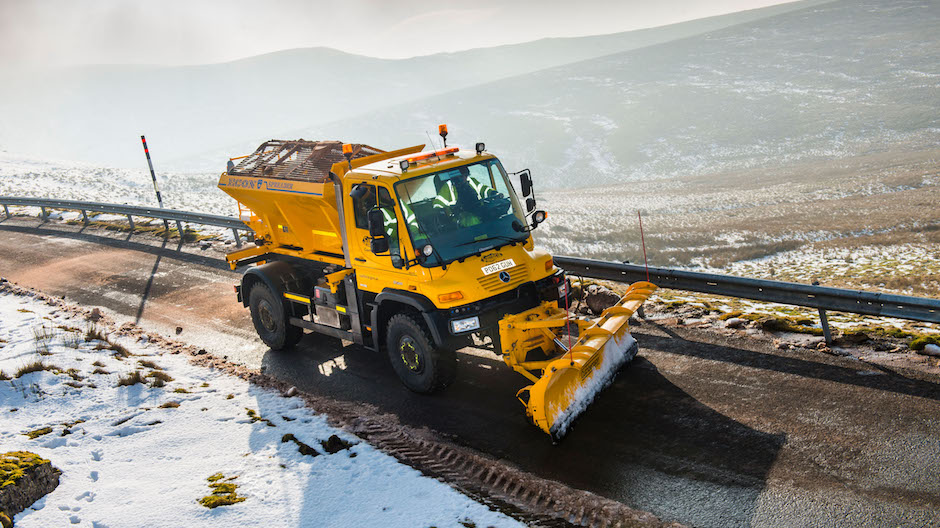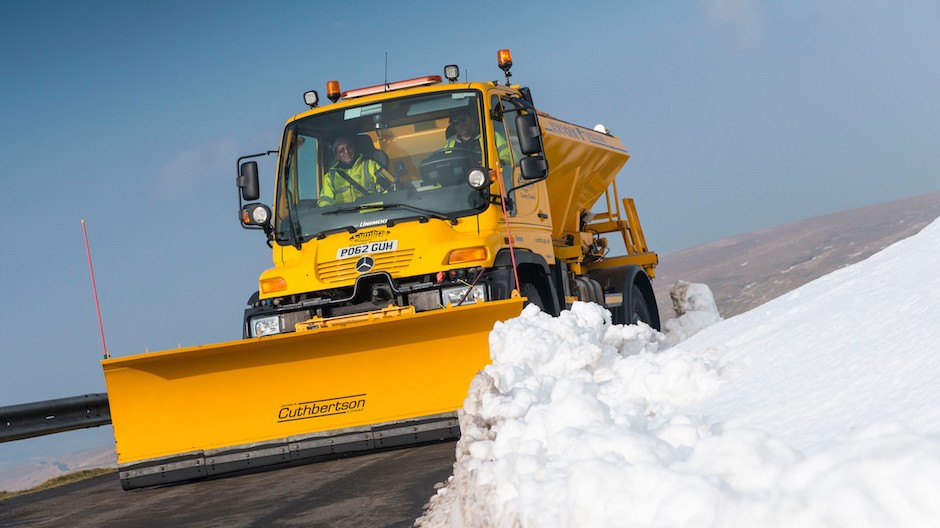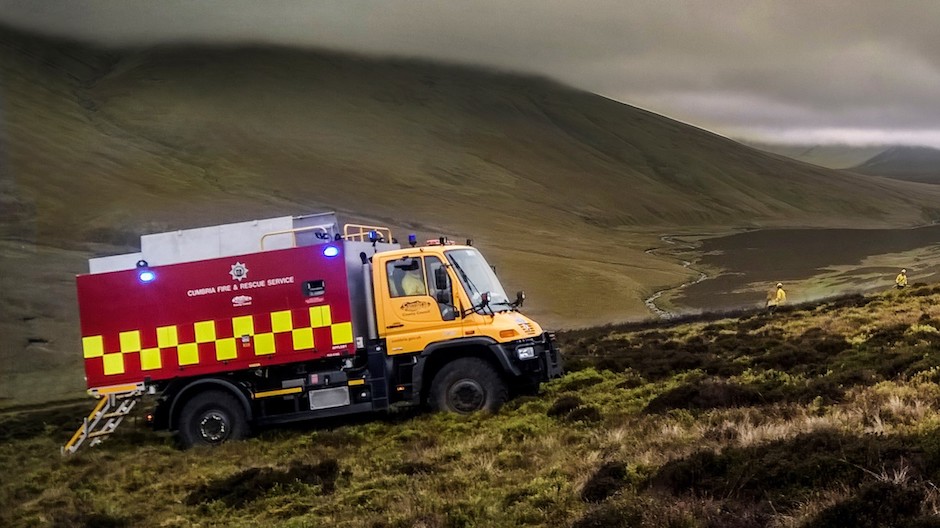
Unimogs conquer ice and fire in Cumbria
UNIMOG
Cumbria has the highest, most challenging terrain and the worst winter weather conditions of all England’s counties.
When the going gets tough, the crews responsible for keeping the hill roads open know they can depend on their trusty Unimogs.

With a territory that takes in the rugged fells of the Lake District and a chunk of the wild and remote north Pennines, Cumbria County Council needs the toughest, most capable vehicles to clear snow and ice for motorists.
Faced with a job of this magnitude, it should be no surprise that highways chiefs rely on a pair of 4x4 Unimogs to spearhead their campaign to keep the county moving.
Spring brings no respite for the versatile off-road trucks – rather than parking them up and waiting for the temperatures to plummet again, the Council removes their gritting and snow-clearing equipment and replaces it with demountable water tanks, pumps and hoses. The trucks are then ready to tackle moorland and forest fires in the most hard-to-reach locations.
Cumbria’s Unimog U500s are currently fitted with 5m3 Econ grit hoppers and spreaders. Up front, depending on the conditions to be tackled, each can be armed with cutting and blowing equipment by Kahlbacher, of Kitzbuhel, Austria – where they know a thing or two about snow – or Cuthbertson plough blades.

In April these will be replaced by 4,000 litre water tanks and high-pressure Angloco spraying pumps, along with racking to carry fire-fighting tools such as axes and beaters. From this point, until they change roles again at the onset of the next winter, they will be crewed by fire-fighters from the Cumbria Fire and Rescue Service.
The County Council’s Transport Services Senior Manager David Jenkinson says: “The Unimogs are superbly capable and are really the only viable option for the type of terrain we have to deal with. Throughout winter they are right at home on Cumbria’s high fell routes, whatever the weather, and in summer they are able to access fires which could be miles from the nearest road.”
The Unimog’s relatively compact footprint is also a useful attribute when working on the narrowest county roads, many of which have high banks or stone walls at either side.
“We’ve operated Unimogs before so our drivers are familiar with them,” continued Mr Jenkinson. “The U500s are the best we’ve seen though. The cabs are extremely well designed and user-friendly, with superb all-round visibility, and they’re supremely competent whatever the conditions. Even when faced with deep snow drifts, steep muddy slopes or the most rutted tracks, there’s just no holding them back.”
The off-road heritage of the iconic Unimog stretches back more than 70 years. Since the first model was launched in 1946, constant development by Mercedes-Benz engineers has kept it at the forefront of the off-road pack and today it is widely acknowledged as the world’s leading all-terrain vehicle, with a reputation forged in the harshest operating conditions.
There are two core variants: an implement carrier with front, side and rear attachment points, and a base truck for a range of other bodies. All Unimogs have 4x4 chassis with single rear wheels, which follow the track created by the front wheels.
Gross weights vary from 7.5 to 16 tonnes and engines from 156 hp to 300 hp – these drive through electro-pneumatic gearboxes with up to eight forward and eight reverse ratios, or automatic transmissions.
Bernhard Dolinek, the manufacturer’s Head of Special Trucks, Unimog, said: “Cumbria Council’s vehicles perfectly illustrate the cost-effective adaptability of the Unimog – these U500s are able to tackle diverse roles with equal aplomb, which is far more efficient than using different chassis for each purpose.”




Comment
Please log in to post a comment.
2 comments